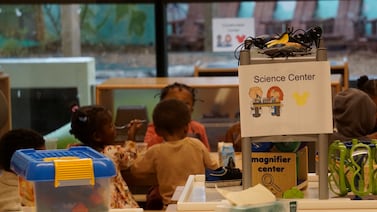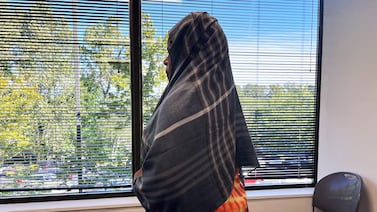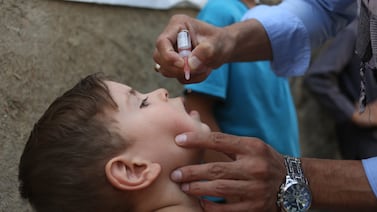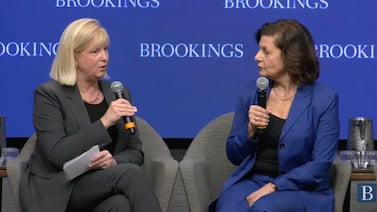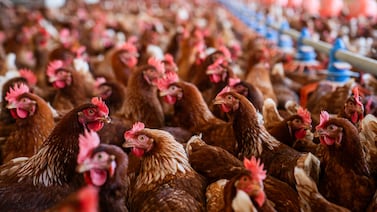Public health, explained: Sign up to receive Healthbeat’s free New York City newsletter here.
Buses and trains may look dirtier in New York City as local agencies take steps to conserve water amid worsening drought conditions.
City and state officials issued a drought warning on Monday for New York City and 10 upstate counties. The warning — the second of three stages of water conservation declarations — underscored the ongoing danger of the city’s historically dry autumn and low reservoir levels. Officials had announced a citywide drought watch earlier this month.
“Climate change is real and it’s impacting our city, and while we cannot make it rain, we can take action to reduce the risk of drought emergencies in our city,” Mayor Eric Adams said during a press conference.
Under a drought warning, city agencies must take steps to reduce water consumption, and residents are urged to voluntarily limit their use of water, including by taking shorter showers, not letting faucets run, and flushing the toilet less frequently. City officials also asked the public to immediately call 311 to report open fire hydrants.
Long Island Rail Road and Metro North trains, as well as city subways and buses, will be washed less frequently, said Janno Lieber, chief executive of the Metropolitan Transportation Authority. The MTA will also prioritize addressing leaks in tunnels and stations, and he noted that employees are on high alert for fires within the transit system.
Other city agencies will take water conservation steps as well. City garbage trucks will be washed less frequently, NYC Parks will limit the use of water for fountains and golf courses, and city building facades will no longer be washed, among other measures.
New York City has faced an unusually dry autumn, with the second-longest dry streak in more than 150 years in October. Over the last 10 weeks, the city has had about 8 inches less rain than is typical, said Department of Environmental Protection Commissioner Rohit T. Aggarwala.
At the same time, the upstate reservoirs that supply the city’s drinking water are at about 60% capacity, but they should be above 79% at this time of year, Aggarwala said.
“This drought has come on fast, it has come on furious,” he said.
Adams also announced Monday that the city will pause the final phase of the $2 billion project to repair the Delaware Aqueduct, a pipeline that delivers from the Catskills about half of the city’s water supply. The long-awaited repair project, announced earlier this fall, aimed to stop 35 million gallons of drinking water from leaking into the ground every day. But the repairs have forced the city to be more reliant on the Croton Watershed, which has received little rainfall.
Dry conditions in the city and throughout the state have led to several wildfires. The Jennings Creek wildfire continues to burn on the New York-New Jersey border, about an hour northwest of New York City. The fire encompasses about 3,100 acres in New York state, according to officials. A statewide burn ban remains in effect.
More locally, brush fires have emerged throughout New York City, including a recent fire that burned two acres of Prospect Park. City firefighters have extinguished more than 300 brush fires this month, said New York City Fire Commissioner Robert S. Tucker, who also stressed that water conservation is vital for the FDNY’s work to keep New Yorkers safe.
New York City Emergency Management Commissioner Zach Iscol asked New Yorkers to call 911 to report smoke and fires. He added that residents should take steps to protect themselves from poor air quality due to wildfires, including by avoiding strenuous exercise, staying indoors, closing windows, using air purifiers, and wearing a mask when outside.
If the city issues a drought emergency — the third level of water conservation declarations — mandatory public restrictions would go into effect.
Aggarwala said it was difficult to say how close the city could be to a drought emergency, but emphasized that the city’s current efforts were an attempt to stave off reaching that level.
“There is a little bit of rain on the forecast. It’s not enough to end the drought,” he said. “I think we’ll reassess in a week or two.”
Eliza Fawcett is a reporter covering public health in New York City for Healthbeat. Contact Eliza at efawcett@healthbeat.org .


